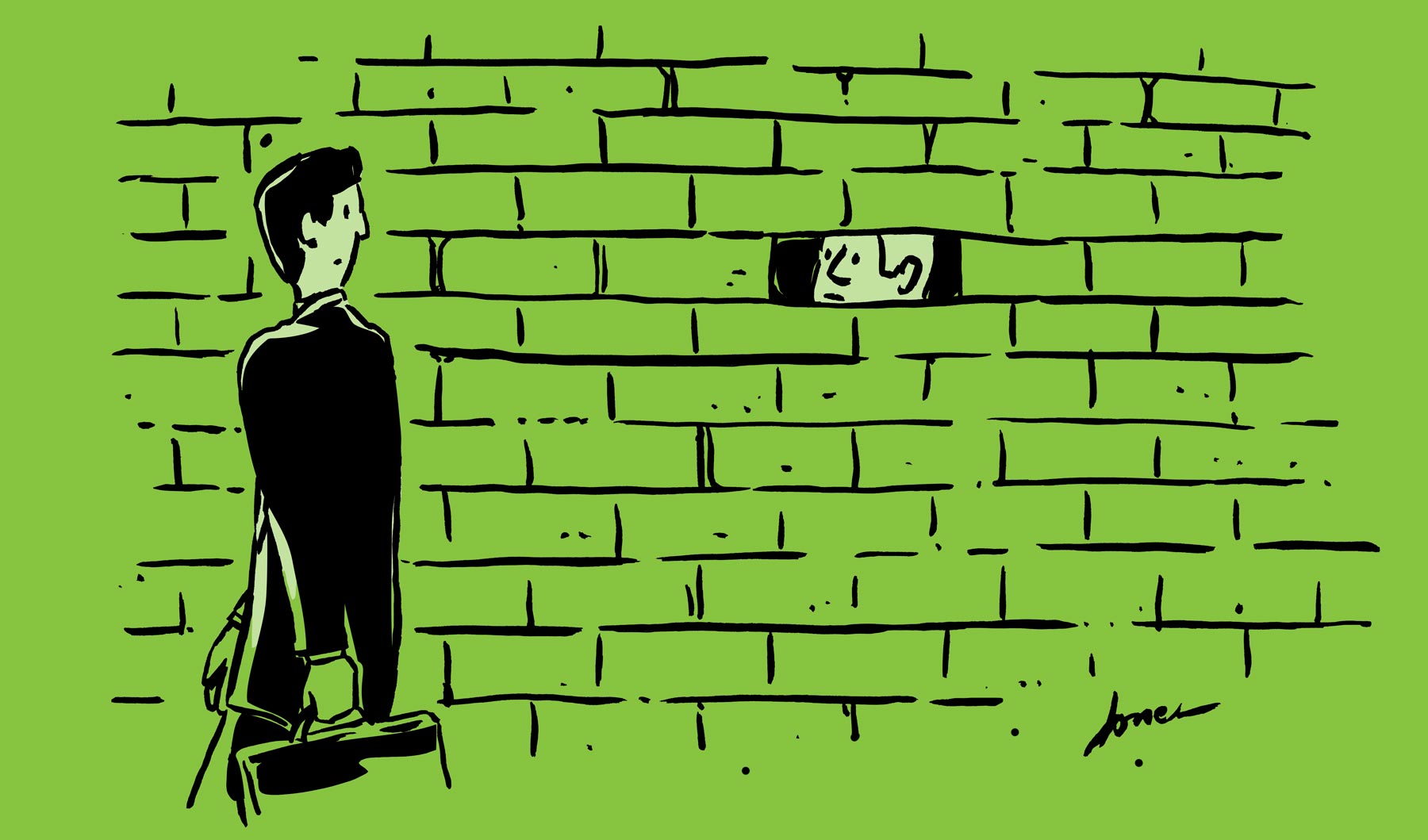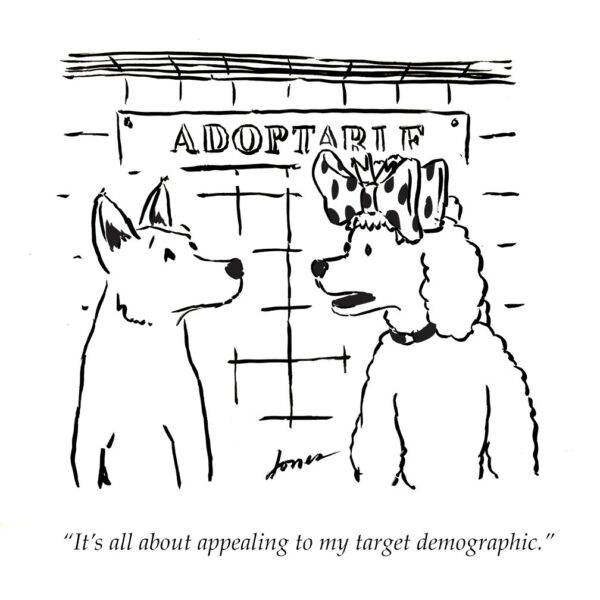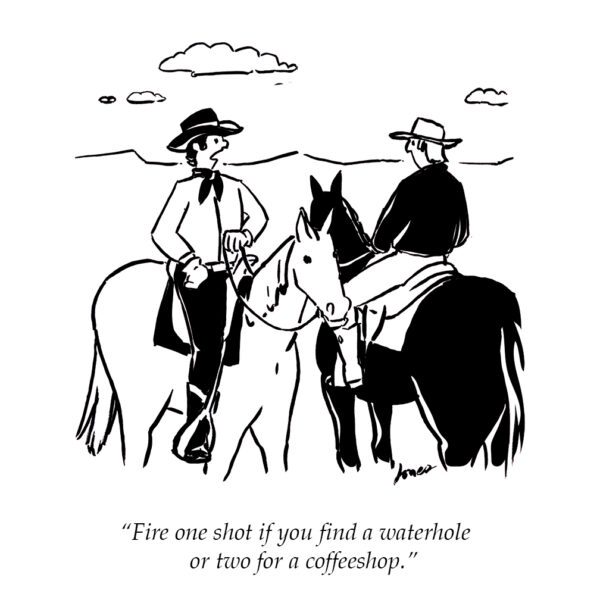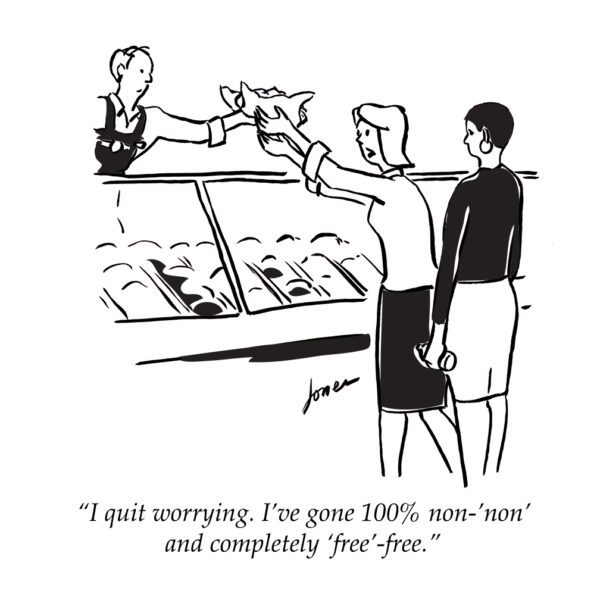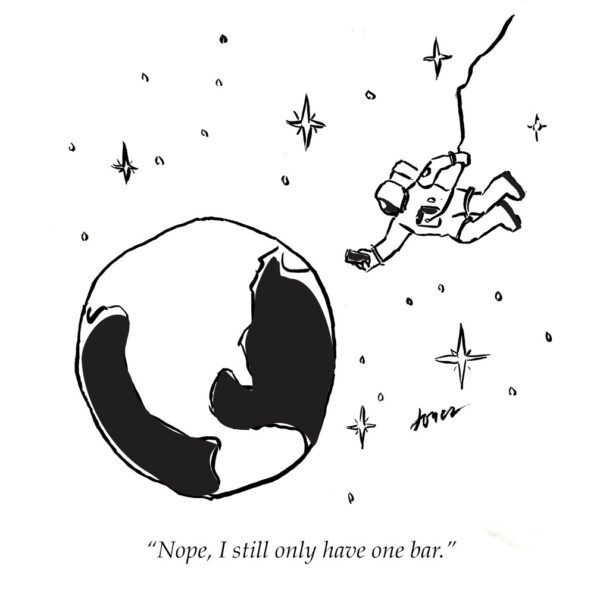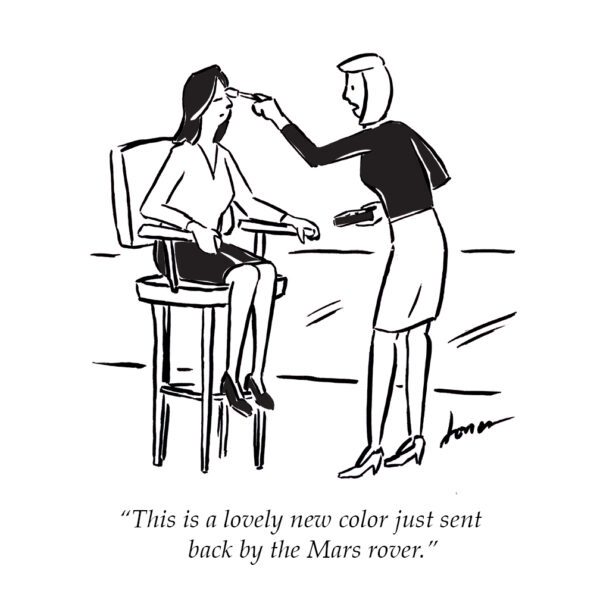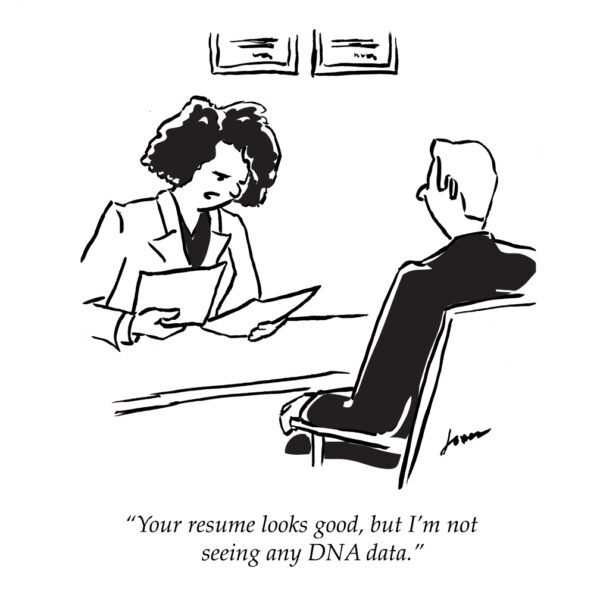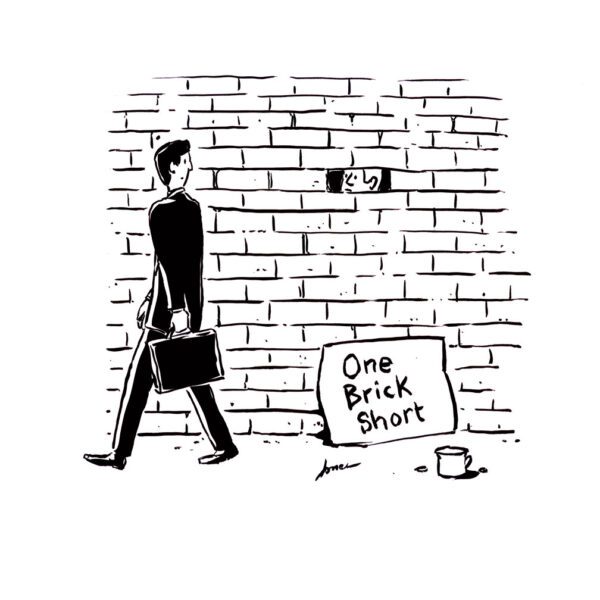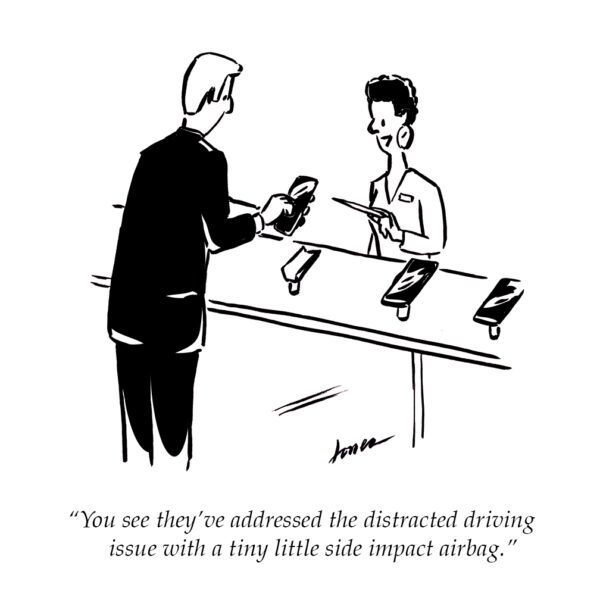Bill Jones, a 30+ year veteran graphic designer and illustrator at Kinetic Strategic Design recently had his 25th cartoon published in the Wall Street Journal. He has seen his cartoon work published in a variety of prestigious publications in recent years including Reader’s Digest, The Saturday Evening Post, American Legion Magazine, American Bystander, and newer periodicals like Alta Magazine and Air Mail.
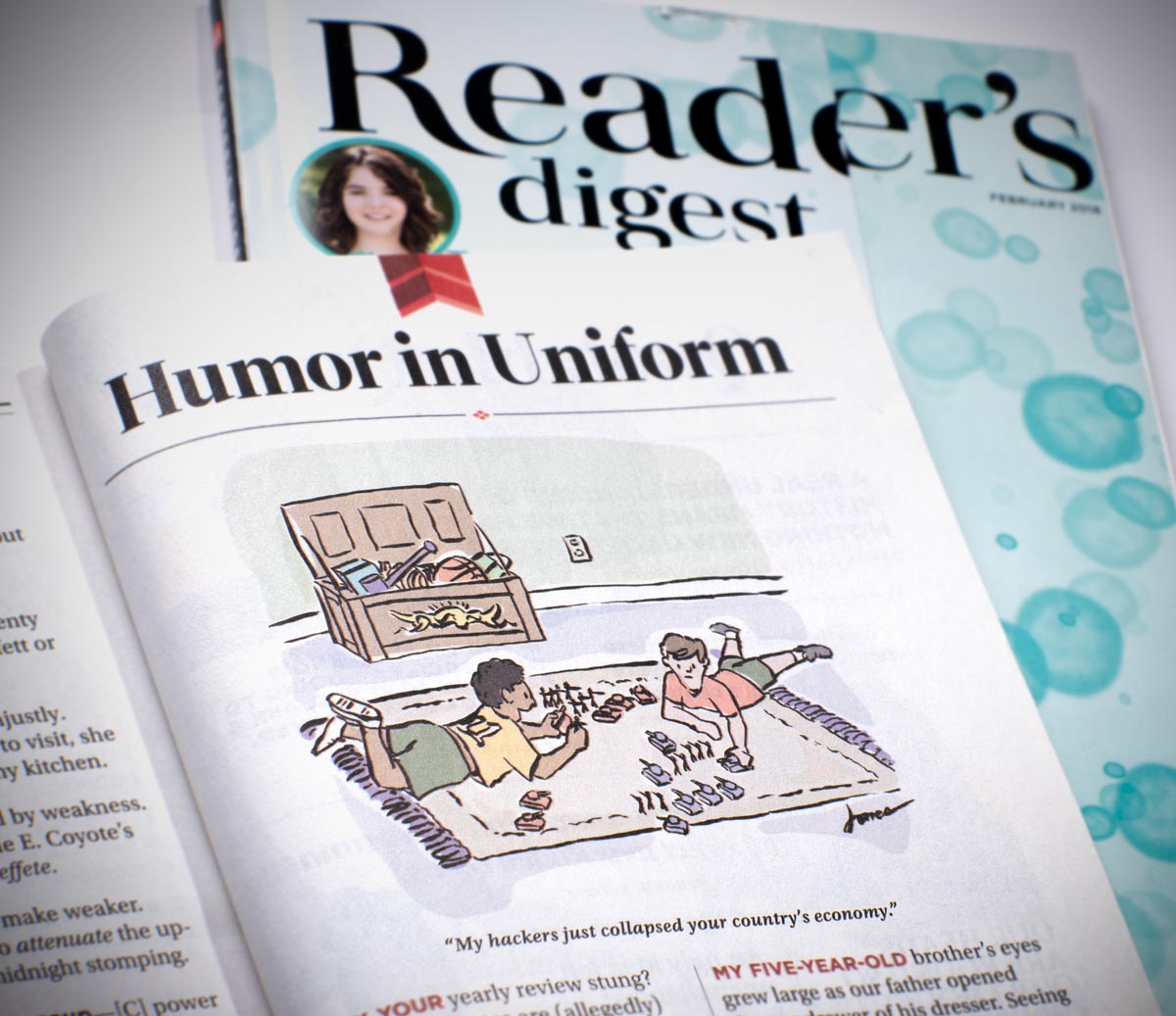
Bill uses his middle name, Noah, for his cartoon work, but many panels are tagged with simply ‘jones‘.
With a very early interest in art, he copied superhero characters from comics. Bill moved into drawing newspaper comic strips in his college years, both at Somerset Community College and the University of Kentucky. He graduated with a degree in graphic design from UK and began his career at KSD in 1988.
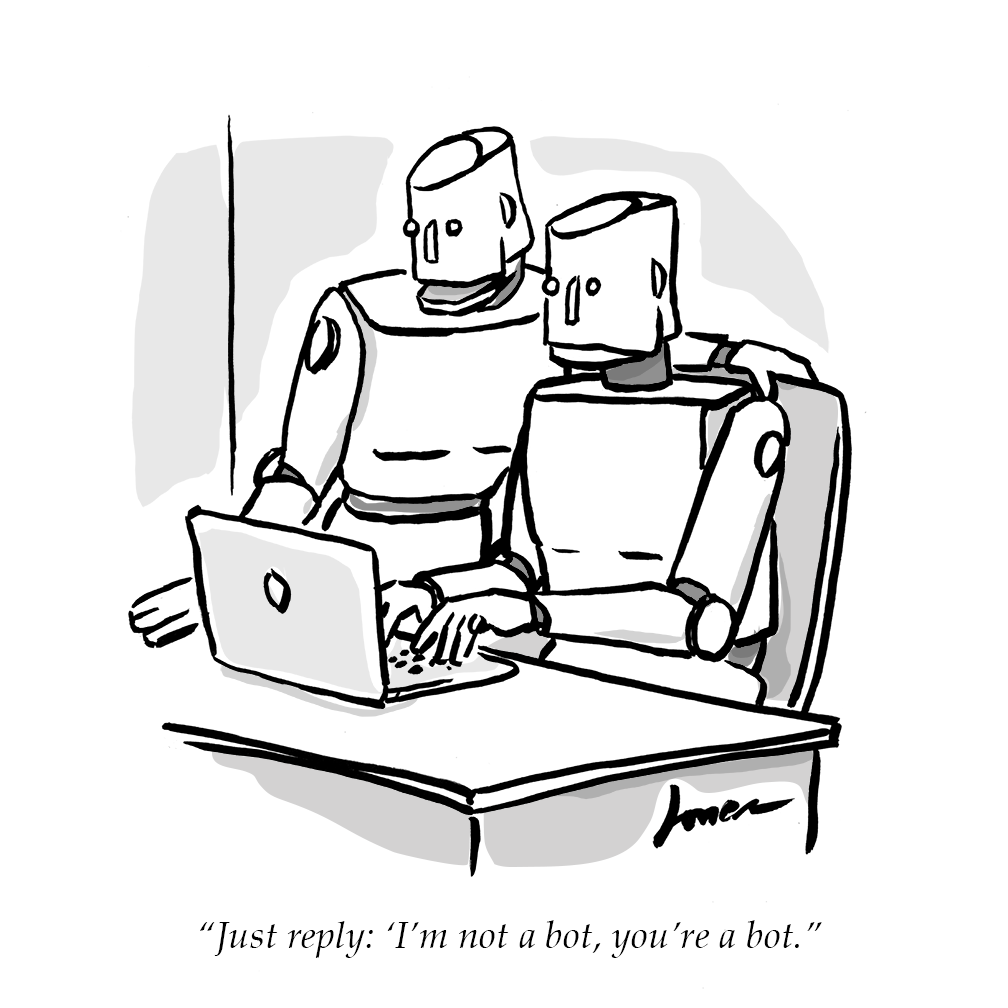
His current interest in single panel cartoons came when a friend gifted him a book of New Yorker cartoons. “I thought ‘I could do that’,” said Bill. “…but not in a negative way. It was more that it was my type of humor.” He cites his favorites from the newspaper comics pages as Calvin and Hobbes (by Bill Watterson), Cul de Sac (by Richard Thompson), and the Far Side (by Gary Larson), and credits two New Yorker cartoonists from the past, Charles Saxon and William Hamilton as really big influences.
Bill’s approach is known as gag cartoons or magazine cartoons. They are one panel, like the Far Side. “They have to be drawn and written in such a way that the reader understands the setting and who the characters are at a glance. The joke usually depends on the reader understanding the context. Occasionally, the joke will be something that could be said by any character in any context, but usually it is something that depends on the context to make it funny. That is why you see so many tropes in single panel cartoons, like a guy stranded on a deserted island, or the grim reaper, or the wise man on the mountain top — the reader immediately knows the context.”
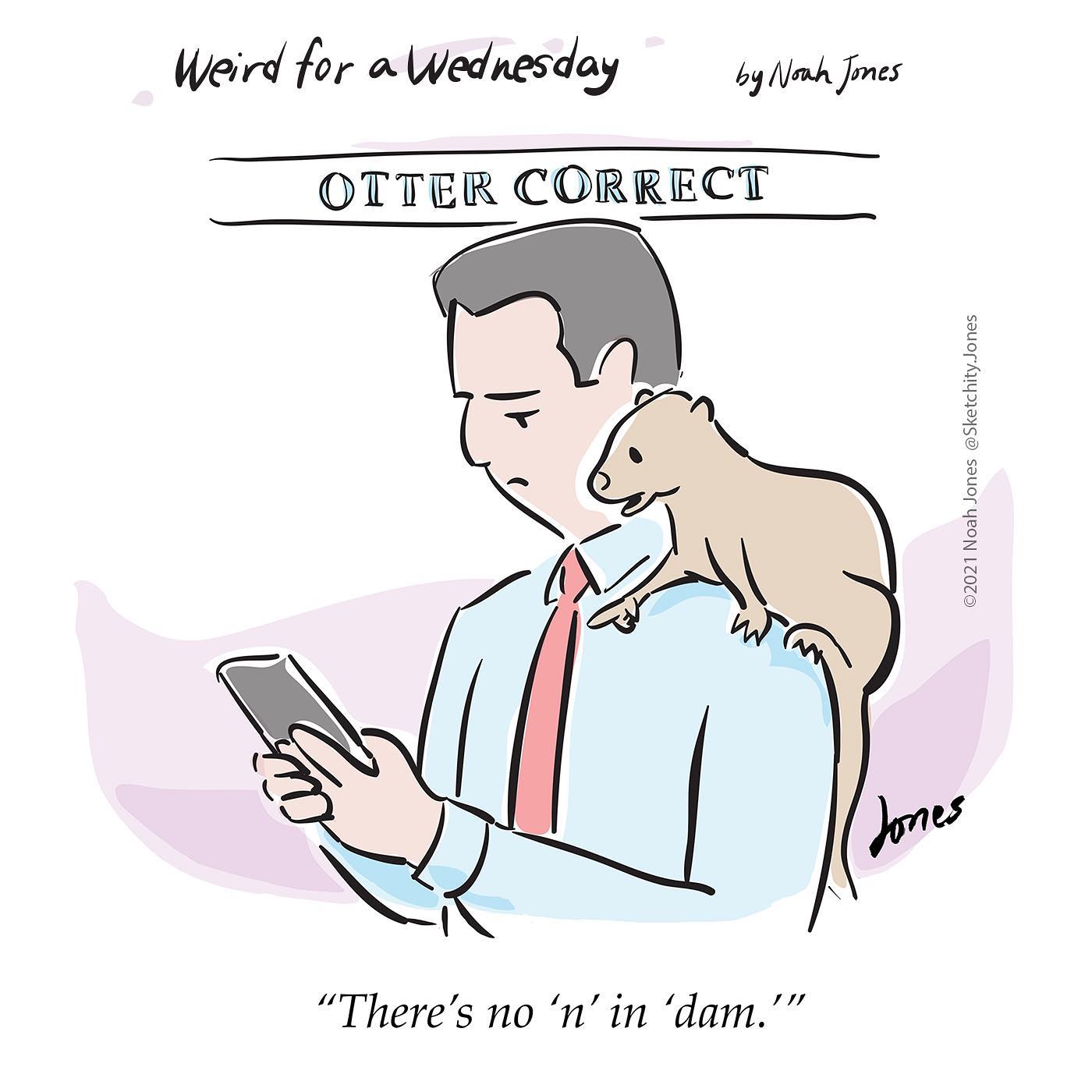
How does an artist think up a cartoon?
Bill says most of his ideas come from just sitting down to brainstorm. “Once in a great while, something funny will happen or be said that I can turn into a cartoon, but not very often. That brainstorming process is a lot like idea generation in design.
“Most of the best ideas come from lateral thinking. You start out thinking about something like the Wizard of Oz characters. You spend a few minutes to see if something funny comes to mind. It may, but if it doesn’t, you shift thinking slightly, rather than switching to something completely different. I think with the Wizard of Oz cartoon I started with the idea of the characters on social media, then a slight shift took me to crowdfunding, and then I realized that might solve all the tin man’s problems.”
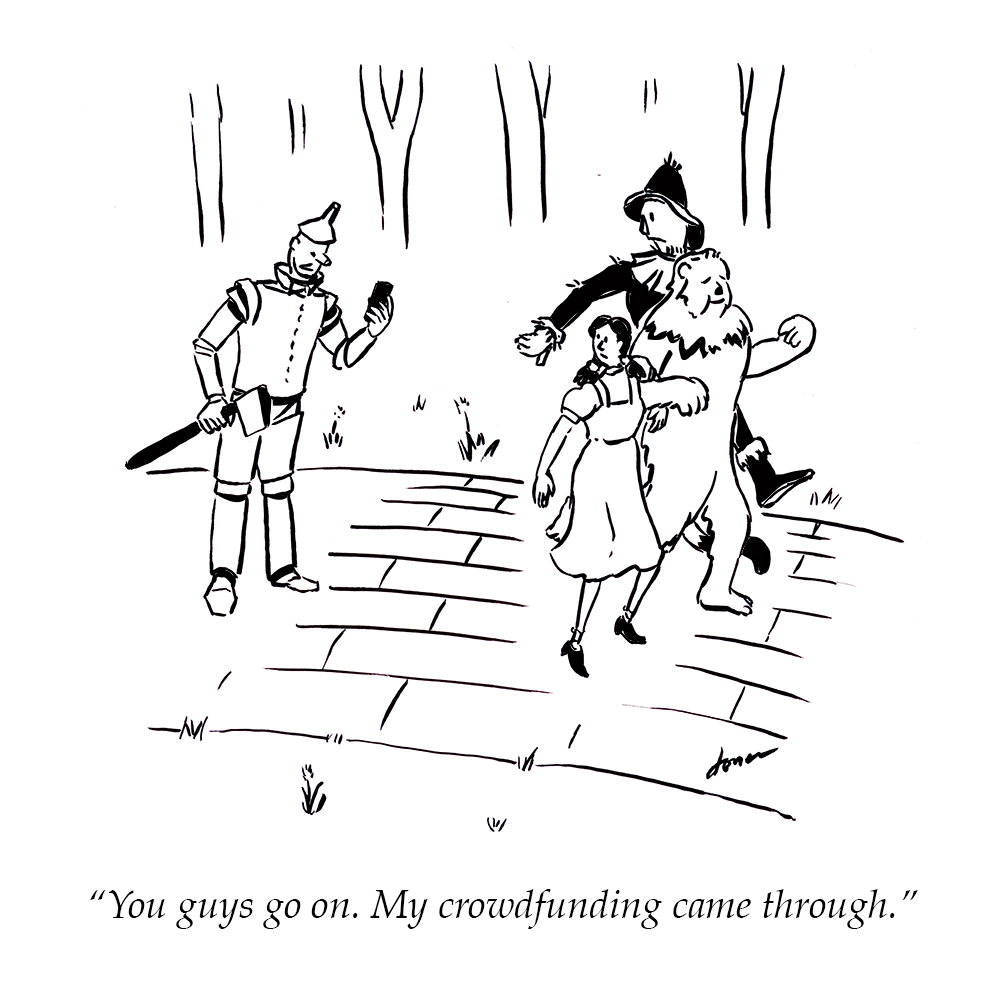
What’s the process?
Bill estimates a cartoon takes probably an hour to an hour and a half to create. “It is hard to say, since I am generally working in sessions to come up with several ideas at a time, then sketching those, then inking the whole bunch, then putting in shading or coloring. I work in traditional ink on paper so there are a couple extra steps of scanning and cleaning up.” He says more and more cartoonists are doing it all digitally, now, with a stylus like an Apple pencil and an iPad or drawing tablet.
To date Bill has sold almost 100 cartoons. “When I have a set of 5 of 10 cartoons I send them off to a publication. Most are on a once a month schedule. Usually, they send me back a note to say no thanks or to buy one or two. The ones I don’t sell I can send to other publications. Some only use black and white and some only color, so I might have to work up another copy to accommodate that.”
You can see more of Bill’s work on Instagram: https://www.instagram.com/sketchity.jones
